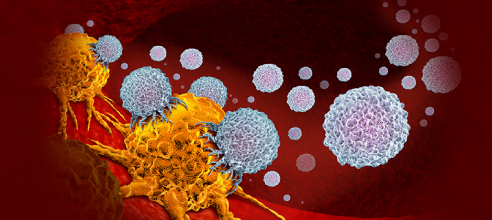Bone Graft Substitute Market: Fostering Bone Regeneration and Transforming Orthopedic Care
[USA] – [26/02/2025] – The global Bone Graft
Substitute Market is experiencing substantial growth, driven by the escalating
demand for effective bone regeneration solutions in orthopedic, dental, and
trauma surgeries. With an aging population, rising incidence of musculoskeletal
disorders, and advancements in biomaterials, bone graft substitutes are
becoming increasingly crucial for enhancing patient outcomes and accelerating
recovery. This press release provides a comprehensive overview of the Bone
Graft Substitute Market, highlighting its key drivers, segments, emerging
trends, and future outlook.
The Bone Graft Substitute Market is expected to register a
CAGR of 6.5% from 2024 to 2031, with a market size expanding from US$ XX
million in 2024 to US$ XX Million by 2031.
Market Overview
The Bone Graft Substitute Market encompasses a diverse range
of biomaterials designed to stimulate bone regeneration and repair bone
defects. These substitutes offer alternatives to traditional autografts and
allografts, addressing limitations such as donor site morbidity and disease
transmission risks. Key product segments include:
- Allografts:
Bone tissues harvested from deceased donors and processed for
transplantation.
- Xenografts:
Bone tissues derived from animal sources, typically bovine or porcine, and
processed to eliminate immunogenicity.
- Synthetic
Bone Grafts: Biomaterials engineered to mimic the structure and
properties of natural bone, including:
- Calcium
Phosphate-Based Grafts: Utilizing materials like hydroxyapatite and
tricalcium phosphate.
- Calcium
Sulfate-Based Grafts: Employing calcium sulfate as a resorbable bone
void filler.
- Bioactive
Glass Grafts: Using glass ceramics that promote bone bonding and
regeneration.
- Polymer-Based
Grafts: Utilizing biodegradable polymers like polylactic acid (PLA)
and polyglycolic acid (PGA).
- Growth
Factor-Enhanced Grafts: Bone graft substitutes supplemented with
growth factors, such as bone morphogenetic proteins (BMPs) and
platelet-rich plasma (PRP), to accelerate bone healing.
- Cellular
Bone Matrices: Scaffolds seeded with osteogenic cells to enhance bone
regeneration.
Key Market Drivers
- Aging
Population: The growing elderly population, susceptible to
osteoporosis and fractures, is driving the demand for bone graft
substitutes.
- Increasing
Incidence of Musculoskeletal Disorders: The rising prevalence of
osteoarthritis, spinal disorders, and traumatic injuries is fueling the
need for effective bone regeneration solutions.
- Advancements
in Biomaterials: Continuous advancements in biomaterial science are
leading to the development of more biocompatible and osteoconductive bone
graft substitutes.
- Growing
Demand for Minimally Invasive Surgeries: Minimally invasive surgical
techniques are driving the adoption of injectable and moldable bone graft
substitutes.
- Rising
Awareness of Bone Graft Alternatives: Increased awareness among
surgeons and patients about the advantages of bone graft substitutes over
traditional autografts and allografts.
- Technological
Innovations: Innovations in tissue engineering, 3D printing, and
growth factor delivery are enhancing the efficacy of bone graft
substitutes.
- Focus
on Personalized Medicine: The trend towards personalized medicine is
driving the development of customized bone graft substitutes tailored to
individual patient needs.
- Stringent
Regulatory Standards: Regulatory bodies are emphasizing the safety and
efficacy of bone graft substitutes, ensuring high-quality products.
Market Segmentation
The Bone Graft Substitute Market can be segmented based on
various criteria, including:
- Product
Type: Allografts, Xenografts, Synthetic Bone Grafts (Calcium
Phosphate, Calcium Sulfate, Bioactive Glass, Polymer), Growth
Factor-Enhanced Grafts, Cellular Bone Matrices.
- Application:
Spinal Fusion, Trauma Repair, Dental Implants, Joint Reconstruction, Bone
Tumor Resection, Others.
- End-User:
Hospitals, Specialty Clinics, Ambulatory Surgical Centers, Dental Clinics,
Others.
- Region:
North America, Europe, Asia-Pacific, Latin America, Middle East &
Africa.
Market Trends and Future Outlook
- Development
of Advanced Synthetic Bone Grafts: The focus on developing synthetic
bone grafts with improved osteoconductivity, biodegradability, and
mechanical strength.
- Integration
of Growth Factors and Cells: The increasing use of growth factors and
cells to enhance bone regeneration and accelerate healing.
- 3D
Printing and Customization: The adoption of 3D printing technology to
create patient-specific bone graft substitutes with tailored shapes and
sizes.
- Nanotechnology
in Bone Grafts: The incorporation of nanomaterials to improve the
bioactivity and mechanical properties of bone graft substitutes.
- Minimally
Invasive Delivery Systems: The development of injectable and moldable
bone graft substitutes for minimally invasive surgical procedures.
- Focus
on Regenerative Medicine: The growing interest in regenerative
medicine approaches, such as stem cell therapy and gene therapy, to
enhance bone regeneration.
- Expansion
in Emerging Markets: The increasing demand for bone graft substitutes
in emerging markets due to improving healthcare infrastructure and rising
disposable incomes.
- Emphasis
on Cost-Effectiveness: The development of cost-effective bone graft
substitutes to reduce healthcare costs and improve patient access.
- Digitalization
and Data Analytics: The use of data analytics and artificial
intelligence to optimize bone graft design and predict patient outcomes.
- Collaboration
and Partnerships: Increased collaboration between biomaterial
companies, research institutions, and healthcare providers to accelerate
innovation and improve patient care.
Business Outlook
- Invest
in Research and Development: Companies should focus on developing
innovative bone graft substitutes with improved efficacy and safety
profiles.
- Expand
Product Portfolio: Offering a diverse range of bone graft substitutes
to cater to various clinical applications and patient needs will drive
market growth.
- Focus
on Customization and Personalized Solutions: Providing customized bone
graft substitutes tailored to individual patient requirements will enhance
patient outcomes.
- Build
Strong Partnerships: Collaborations with research institutions,
healthcare providers, and distributors are crucial for developing and
commercializing innovative products.
- Prioritize
Regulatory Compliance: Ensuring compliance with stringent regulatory
standards is essential for gaining market access and maintaining customer
trust.
- Expand
into Emerging Markets: Exploring opportunities for market expansion in
emerging markets with growing healthcare infrastructure will drive
long-term growth.
- Focus
on Minimally Invasive Solutions: Developing injectable and moldable
bone graft substitutes for minimally invasive surgical procedures will
meet the growing demand for less invasive treatments.
- Invest
in Advanced Manufacturing Technologies: Adopting advanced
manufacturing technologies, such as 3D printing and nanotechnology, will
enhance product quality and efficiency.
- Focus
on Data Analytics and Patient Monitoring: Utilizing data analytics and
patient monitoring systems to optimize treatment protocols and improve
patient outcomes.
- Provide
Comprehensive Training and Support: Offering comprehensive training
and support services to surgeons and healthcare providers will facilitate
the adoption of new technologies.
Conclusion
The Bone Graft Substitute Market is transforming orthopedic
care by providing innovative solutions for bone regeneration and repair. As
technology continues to advance and the demand for effective bone healing
solutions increases, the Bone Graft Substitute Market is poised for continued
growth, improving patient outcomes and enhancing the quality of life for
individuals with bone defects.
- Like
- Reply
-
Share
About Us · User Accounts and Benefits · Privacy Policy · Management Center · FAQs
© 2025 MolecularCloud



